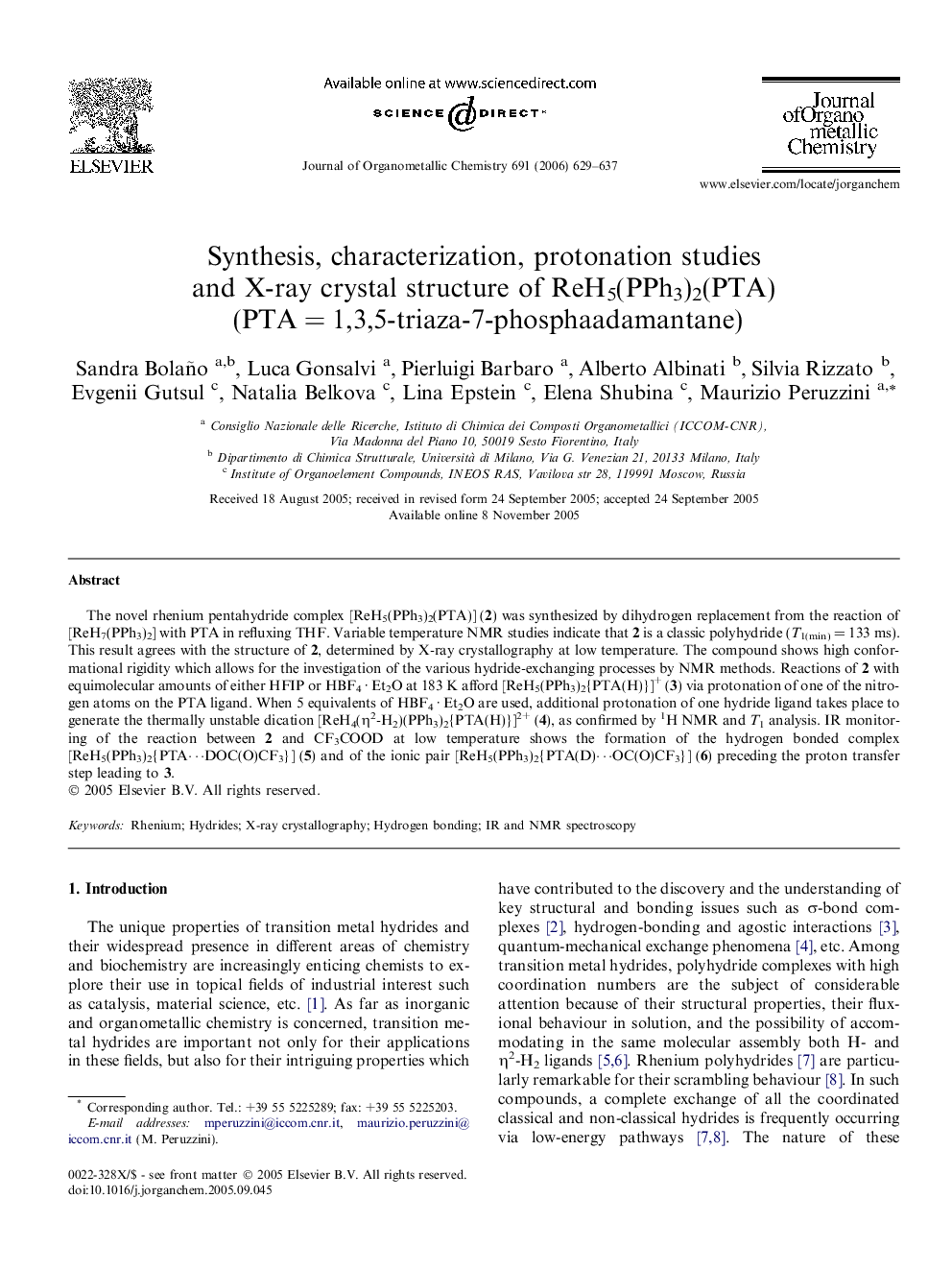| Article ID | Journal | Published Year | Pages | File Type |
|---|---|---|---|---|
| 1323999 | Journal of Organometallic Chemistry | 2006 | 9 Pages |
The novel rhenium pentahydride complex [ReH5(PPh3)2(PTA)] (2) was synthesized by dihydrogen replacement from the reaction of [ReH7(PPh3)2] with PTA in refluxing THF. Variable temperature NMR studies indicate that 2 is a classic polyhydride (T1(min) = 133 ms). This result agrees with the structure of 2, determined by X-ray crystallography at low temperature. The compound shows high conformational rigidity which allows for the investigation of the various hydride-exchanging processes by NMR methods. Reactions of 2 with equimolecular amounts of either HFIP or HBF4 · Et2O at 183 K afford [ReH5(PPh3)2{PTA(H)}]+ (3) via protonation of one of the nitrogen atoms on the PTA ligand. When 5 equivalents of HBF4 · Et2O are used, additional protonation of one hydride ligand takes place to generate the thermally unstable dication [ReH4(η2-H2)(PPh3)2{PTA(H)}]2+ (4), as confirmed by 1H NMR and T1 analysis. IR monitoring of the reaction between 2 and CF3COOD at low temperature shows the formation of the hydrogen bonded complex [ReH5(PPh3)2{PTA⋯DOC(O)CF3}] (5) and of the ionic pair [ReH5(PPh3)2{PTA(D)⋯OC(O)CF3}] (6) preceding the proton transfer step leading to 3.
Graphical abstractThe protonation of the novel rhenium pentahydride [ReH5(PPh3)2(PTA)] (2) with HBF4 · Et2O at 183 K affords [ReH5(PPh3)2{PTA(H)}]+ (3) or [ReH4(η2-H2)(PPh3)2{PTA(H)}]2+ (4), depending on the H+/2 ratio, as confirmed by 1H NMR and T1 analysis. IR monitoring of the reaction between 2 and CF3COOD at low temperature shows the formation of the hydrogen bonded complexes [ReH5(PPh3)2{PTA⋯DOC(O)CF3}] (5) and [ReH5(PPh3)2{PTA(D)⋯OC(O)CF3}] (6) preceding the proton transfer step eventually leading to 3.Figure optionsDownload full-size imageDownload as PowerPoint slide
